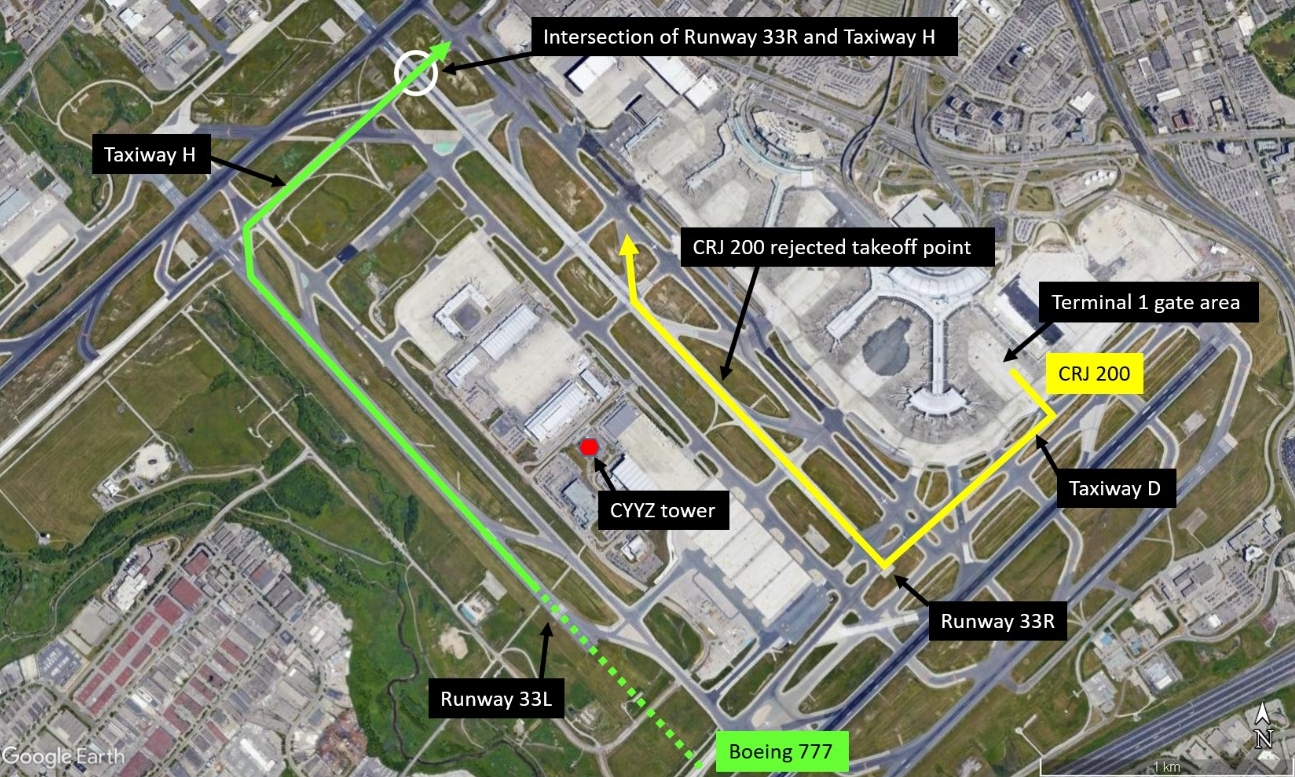
ASN Wikibase Occurrence # 246781
This information is added by users of ASN. Neither ASN nor the Flight Safety Foundation are responsible for the completeness or correctness of this information.
If you feel this information is incomplete or incorrect, you can submit corrected information.
| Date: | Friday 9 August 2019 |
| Time: | 12:43 LT |
| Type: |  Canadair CRJ-200 |
| Owner/operator: | Air Georgian |
| Registration: | C-GKEJ |
| MSN: | 7269 |
| Fatalities: | Fatalities: 0 / Occupants: 45 |
| Aircraft damage: | None |
| Location: | Toronto–Lester B. Pearson International Airport, Ontario (YYZ) -
 Canada Canada
|
| Phase: | Take off |
| Nature: | Passenger - Scheduled |
| Departure airport: | Toronto-Pearson International Airport, ON (YYZ/CYYZ) |
| Columbus-John Glenn International Airport, OH (CMH/KCMH) | |
| Investigating agency: | TSB |
| Confidence Rating: |
On 09 August 2019, the Air Georgian CRJ-200 aircraft was preparing to conduct flight GGN7339 from Toronto/Lester B. Pearson International Airport, Ontario, to John Glenn Columbus International Airport, Ohio, United States.
The Air Canada Boeing 777-300 aircraft (registration C-FIUR, serial number 35242) was completing flight AC883 from Kobenhavn/Kastrup Airport, Copenhagen, Denmark, to Toronto/Lester B. Pearson International Airport, Ontario.
At 12:40 local time, the flight crew of the CRJ-200 began taxiing and approximately 3 minutes later, was instructed by the tower controller to line up on Runway 33R. At approximately the same time, the Boeing 777 landed on Runway 33L and taxied onto Taxiway H. The north ground controller instructed the flight crew of the Boeing 777 to cross Runway 33R, and while the Boeing 777 was crossing the runway, the crew of the CRJ-200 began its take-off roll, without clearance. When the flight crew of the CRJ-200 saw the Boeing 777 over the crest of the runway, they aborted the takeoff and exited the runway via Taxiway B2. The occurrence took place during day visual meteorological conditions.
Findings as to causes and contributing factors:
- The number of pre-departure tasks the flight crew was required to complete within a short amount of time increased their workload.
- The first officer’s workload was further elevated as she focused on the heading and altitude change of the standard instrument departure amendment, which, at the time, she believed was most important in the line-up instruction.
- When the first officer received and read back the line-up instruction with the standard instrument departure amendment she had misinterpreted that air traffic control communication as a clearance for takeoff.
- The increased workload, the expectation to receive a take-off clearance without delay, and the misinterpretation of the line-up instructions, led the crew to initiate the take-off roll without a take-off clearance.
- The fuselage of the Boeing 777 would not have been visible to the CRJ 200 crew at the start of the take-off roll because of the grade profile of Runway 33R; therefore, the crew had no visual indication that it was unsafe to initiate the take-off roll on Runway 33R.
Accident investigation:
 |
|
Sources:
TSB
Images:

Figure: TSB
Revision history:
| Date/time | Contributor | Updates |
|---|---|---|
| 15-Jan-2021 18:56 | harro | Added |
| 15-Jan-2021 18:58 | harro | Updated [Time, Location, Photo] |
Corrections or additions? ... Edit this accident description
The Aviation Safety Network is an exclusive service provided by:


 ©2024 Flight Safety Foundation
©2024 Flight Safety Foundation